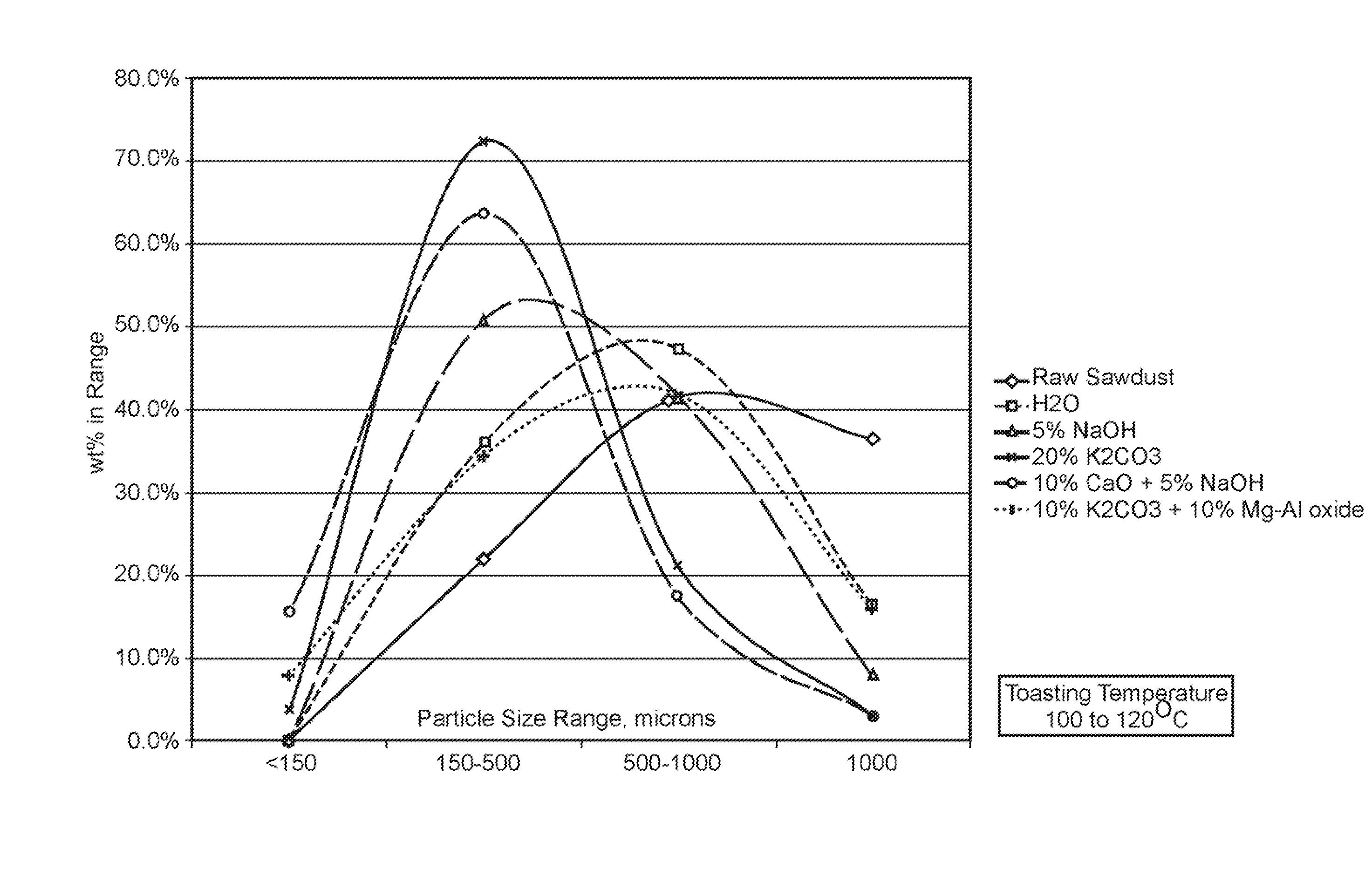Comminution and densification of biomass particles
a biomass particle and densification technology, applied in the direction of biofuels, grain treatment, fuels, etc., can solve the problems of large amount of energy, fiber-like or needle-like particles, etc., and achieve the effect of reducing the resistance of a solid biomass material
- Summary
- Abstract
- Description
- Claims
- Application Information
AI Technical Summary
Benefits of technology
Problems solved by technology
Method used
Image
Examples
Embodiment Construction
[0012]The following is a description of certain embodiments of the invention, given by way of example only.
[0013]The process of the invention is particularly suited for biomass materials of plant origin. Nature provides plants with a high degree of resilience, so that plants may withstand strong forces, such as high winds, without breaking. Lignocellulosic plants, for example, form fibrous structures. The ability of plants to bend with the wind, rather than breaking, is proverbial.
[0014]The very properties that allow plants to withstand strong forces without breaking make it difficult to reduce the particle size of biomass material. Processes for reducing the particle size of a solid material generally involve applying mechanical force to the material. Examples include shredding, chipping, milling, grinding, kneading, etc. If the applied force exceeds the material's ability to absorb applied forces, the material will shatter or break, resulting in a reduction of its particle size. I...
PUM
| Property | Measurement | Unit |
|---|---|---|
| temperature | aaaaa | aaaaa |
| temperature | aaaaa | aaaaa |
| temperature | aaaaa | aaaaa |
Abstract
Description
Claims
Application Information
 Login to View More
Login to View More - R&D
- Intellectual Property
- Life Sciences
- Materials
- Tech Scout
- Unparalleled Data Quality
- Higher Quality Content
- 60% Fewer Hallucinations
Browse by: Latest US Patents, China's latest patents, Technical Efficacy Thesaurus, Application Domain, Technology Topic, Popular Technical Reports.
© 2025 PatSnap. All rights reserved.Legal|Privacy policy|Modern Slavery Act Transparency Statement|Sitemap|About US| Contact US: help@patsnap.com


